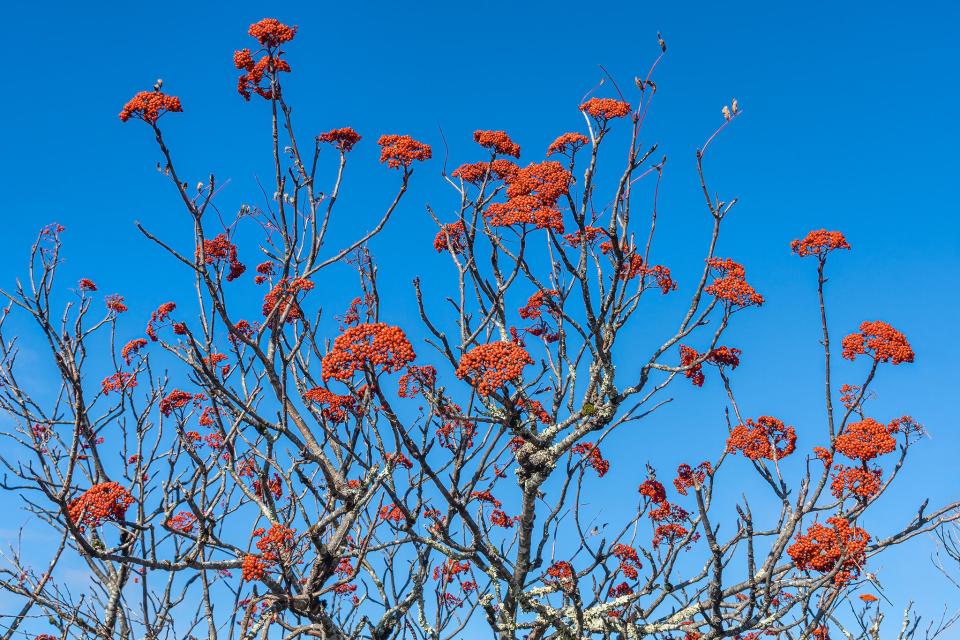This mountain tree delivers a bounty of winter fruit for birds | Mystery Plant
As of the writing of this essay it is almost winter, which officially arrived on Dec. 21, but it’s cold, for me anyway. No more flowers to enjoy…well, not that many.
Nevertheless, there are plenty of reasons for taking a walk in the woods and looking at the plant life around us. Of course, there’s no reason that you can’t enjoy beautiful plants as you drive along the highway.
The subject of this essay is a plant that is putting on a wonderful late-season show now, almost appearing to be on fire…with exploding firecrackers all over its branches. What a treat!

It's a slender, native tree in the Southeastern mountains, found only at relatively high altitudes. You'll see it in the higher elevations of northern Georgia, and western North Carolina, the very easternmost parts of Tennessee, then western Virginia and the eastern counties of West Virginia.
If you happen to be on the Blue Ridge Parkway anytime soon, be on the lookout.
Farther north, it is fairly widespread throughout New England and into much of Ontario and New Brunswick. The trees are sometimes up to about 30' tall, and they are commonly seen in forest openings and bouldery places, or along roadsides.
Interestingly, it's often a shrubbier plant the farther north you go, where it may be found at lower elevations. Actually, a good many woody species share this distributional size effect.
Our Mystery Plant (Mountain ash, Rowan, Sorbus americana) has a close relative in Europe, another species which looks very similar to ours.
This species is beautiful all year long. The bark is smooth and gray, becoming scaly with increased age and size. The crown will be full and spreading on large individuals. Its handsome leaves are prominently divided into numerous sharply toothed leaflets, and these leaflets, 11-15 or so, are even spaced along a thin midrib.
Small flowers, each with five white petals, are densely clustered as they open in late spring. Each flower will have 15-20 stamens, and you might think that these flowers look like miniature versions of cherry flowers. Bees pollinate the flowers. (When I’ve smelled the flowers, I’ve found them to be a bit stinky, something like those of a Bradford pear.)
The flowers are followed by small, hard green fruits, which, anatomically, share many features with that of an apple, or pear. The ripe fruit is about a third of an inch long, containing mealy flesh and several seeds.
The botanical term for this kind of fruit is "pome," which of course sounds a lot like the French word for apple, pomme. This fruit type is found only in certain plants belonging to the rose family.
These pomes are highly prized as a food source by a great variety of birds and other critters, including moose, which also like to browse the foliage. Plus, the leaves tend to turn bright yellow or red in the autumn, and can put on a terrific display. It makes a beautiful plant in cultivation, but it doesn't take heat very well, so flatlanders like me wouldn’t have much success with it.
John Nelson is the retired curator of the Herbarium at the University of South Carolina, in the Department of Biological Sciences. As a public service, the Herbarium offers free plant identifications. For more information, call 803-777-8175 or email johnbnelson@sc.rr.com.
This article originally appeared on Tallahassee Democrat: Mountain ash delivers bounty of fruit for birds in winter

